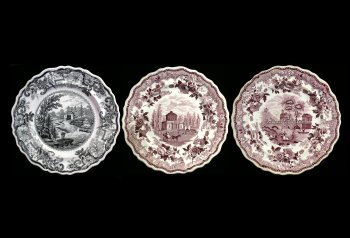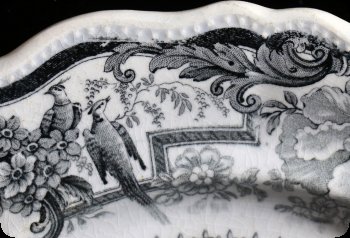Competition Across the Continents
Although the “Baker’s Falls” plate was made by James and Ralph Clews, and the “Water Works” and “Race Works” plates were made by Job and John Jackson, all three plates are identical in diameter and apparently were made from the same mold. Note that they all share the same scalloped rim edged with raised dots. We don’t know if the Jacksons obtained the molds from the Clews pottery through gift, purchase, or outright theft. The Jacksons were nephews of James and Ralph Clews and trained at the Clews pottery in Cobridge, Staffordshire, England, before setting out on their own.
They traveled to the United States, where they immediately started stealing customers from their uncles. The outraged Clews brothers wrote to New York merchants, expressing their “very great surprise and disgrace” over the actions of their nephews. The Jacksons were able to win a major stake in the American trade. Yet in the end, neither side prevailed. Both were bankrupt by 1835. Labor unrest in the Staffordshire pottery district played a major role in their downfall. The Jackson brothers moved to New York City where John established a successful ceramics business there. James Clews also moved to the United States and opened a short-lived pottery production business in Indiana in 1836.






